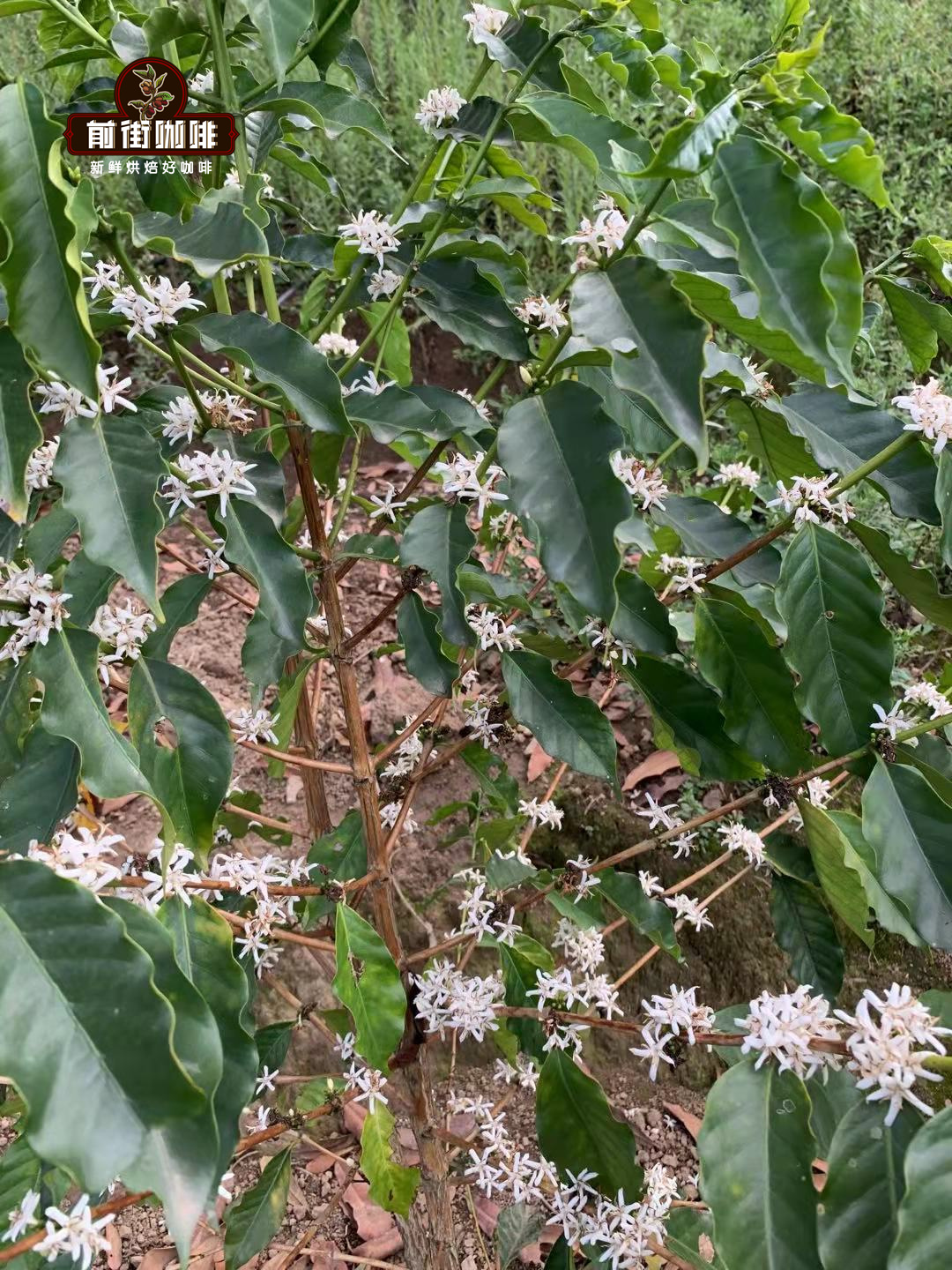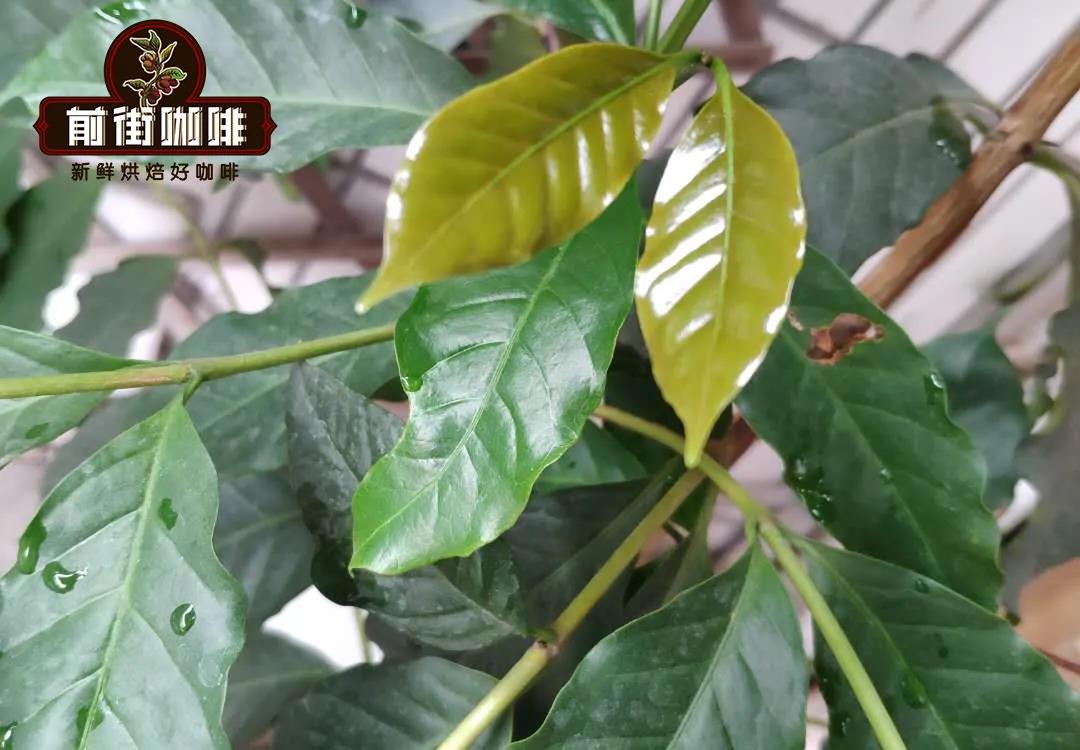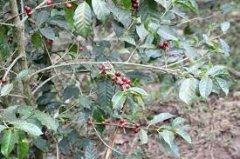How do Iron pickup Coffee and Bourbon Coffee identify different Coffee varieties
You may or may not know what coffee trees look like, what iron pickup coffee trees look like, and what about the Bourbon dynasty. There are many kinds of coffee, but it is not always clear how they are different. Leaving aside the changes in flavor and outline, there are obvious physical differences between plants.
Not to mention the different shapes of many coffee trees, just look at the coffee flowers blooming in coffee trees, because the varieties are different, the shape of coffee flowers is also different. Let's take a look at the characteristics of their different varieties.

How to identify the characteristics of different coffee varieties
There are hundreds of kinds of coffee, but about 70% of the world's coffee production is Arabica coffee. Although Arabica is more fragile than Robusta, its taste and aroma make it more attractive to most consumers. There are many Arabica varieties, a few of which are commonly grown for professional and commercial use.
The following uses certain physical characteristics (also known as phenotypes) to identify plants, but not as an overall reference.
They can be understood and recognized from these aspects: stature (tall or compact), leaf tip color (green or bronze), plant shape (conical or round), leaf shape (elongated or wide), cherry and mung bean shape and size (elongated, round or other, and small, medium, large or very large), cherry color (red, yellow, orange or even pink), branch angle The distance between branches (short or long), and the distance between nodes in the same branch (short or long).
It is not always necessary to use all these features to identify varieties, because some varieties have a distinct feature.

Characteristics of Iron pickup Coffee Tree
Typica has unique characteristics, and it is probably the easiest variety to identify. The plant has a cone-shaped vertical trunk that can reach 5 meters. This height indicates that the distance between branches and nodes on the same branch is longer than that of other varieties.
Lateral branches form an angle of 50 to 80 °with a vertical stem. The trunk and branches are not very thick. Leaves, cherries and mung beans are usually elongated, and the tips of the leaves are bronze when young.
Compared with other species of Arabian trees, the leaves have smoother surfaces and fewer wavy boundaries. The Ironpika cherries are ripe bright red.
Characteristics of bourbon coffee tree
Bourbon is the same size and cone as the tin pickup, but thicker, with more secondary branches. The main trunk is larger and the branches seem to be thicker, so plants are stronger than Typica. The distance between the branch and the node is also a little shorter. This increase in density means that bourbon produces about 30% more fruit than tin pickups.
The leaves are wider than Typica and have a rugged texture with wavy edges. Young leaves are usually green, but sometimes they can have bronze tips. Cherries are round and ripe to a range of red, orange, or yellow.
Characteristics of Kaddura Coffee Tree
Many varieties are descended from bourbon and iron pickups, and Kaddura is a natural mutation of bourbon that is much shorter and denser than its relative plan. It has a small distance from the branches on the trunk and many secondary branches, making Kaddura a thicker plant than iron pickup or bourbon.
Otherwise, it has similar characteristics to bourbon. Its large leaves have wavy boundaries and green tips. Cherries are also round, average size, and ripe in red or yellow.
Characteristics of Kaduai Coffee Tree
Katudu is the cross between Mondonovo and Kaddura. Just as Kaddura is a natural mutation of bourbon, Mondonovo is a natural mutation of Tippika. In Katuai, you can find features from tin pickups and bourbon.
The plant is relatively short, and the lateral branches form a close angle to the main branches. The secondary branches at the top of the plant are rarely seen, which makes the plant more umbrella-shaped than iron pickup and bourbon, which is conical.
Kaduai leaves are wavy and usually have a green hint. The fruit does not fall easily from the branches, which makes it a good choice in areas with strong wind and rain.
Characteristics of Pacamara coffee tree
Pacamara is a cross between Pacas and Marago Gippe varieties, founded by the Salvadoran Coffee Institute (ISIC) in 1958. It is not considered to be a stable variety, which means that plants are inconsistent from one generation to the next. However, it has been widely developed.
Pacas is another mutation of Bourbon, and Marago Gippe is a mutation of Typeka. The latter has very large cherries, which are passed on to Pacamara. The size of the fruit and unique pointed leaves make Pacamara easy to identify. These leaves can have green or bronze tips.
The figure is compact, the plant shape is conical. The distance between the branch and the nodes on the branch is very short, making it a dense plant. Trunks and branches are similar to bourbon trees because they are thicker and less flexible than most other varieties.
Characteristics of Geisha Coffee Tree
This very popular variety can be easily identified from the angle of the upper branch and the shape of the plant. The branches facing the top protrude into the sky at an angle of 45 to 50 degrees. Geisha is tall, the branches are far apart from the nodes, and the trunks and branches are thin, a bit like a tin truck.
The leaves are smooth and elongated, and the cherries are elongated in a manner similar to the tin card cherry. In my experience, the main obvious difference between a geisha and an iron pickup is that the former has an umbrella or flat roof, while the tin card has a cone.
The taste of ripe geisha cherries is completely different from other varieties. They have citrus, sweetness, and jasmine floral elements.
Different varieties of coffee are not only different in flavor and outline, they are also different plants visually.
Important Notice :
前街咖啡 FrontStreet Coffee has moved to new addredd:
FrontStreet Coffee Address: 315,Donghua East Road,GuangZhou
Tel:020 38364473
- Prev

What is a shaded coffee tree? What are the effects of the benefits of shaded coffee on the flavor characteristics of coffee beans
Coffee grown in the shade is grown under the canopy of tall trees, which provide shade. Traditionally, coffee has been grown in this way under the canopy of a natural forest, which has many benefits. However, pressure to increase crop yields has led some coffee crops to grow under reduced shading and / or direct sunlight, which requires greater use of pesticides and non-
- Next

Panamanian champion coffee bean picking time processing method Catova Coffee Family Story
A century-old monument treatment site surrounded by mountains. Katowa is the meaning of the local language mountains. Katowa in Ricardo has a total of four manor groups, mainly growing Katula and Tippika varieties. The complex and multi-level flavor can be obtained by planting these two varieties in the high altitude area of more than 1 600 meters in this area. Katowa is famous for its two great estates, one as Katova. Tang he (Kotowa Don K)
Related
- Detailed explanation of Jadeite planting Land in Panamanian Jadeite Manor introduction to the grading system of Jadeite competitive bidding, Red bid, Green bid and Rose Summer
- Story of Coffee planting in Brenka region of Costa Rica Stonehenge Manor anaerobic heavy honey treatment of flavor mouth
- What's on the barrel of Blue Mountain Coffee beans?
- Can American coffee also pull flowers? How to use hot American style to pull out a good-looking pattern?
- Can you make a cold extract with coffee beans? What is the right proportion for cold-extracted coffee formula?
- Indonesian PWN Gold Mandrine Coffee Origin Features Flavor How to Chong? Mandolin coffee is American.
- A brief introduction to the flavor characteristics of Brazilian yellow bourbon coffee beans
- What is the effect of different water quality on the flavor of cold-extracted coffee? What kind of water is best for brewing coffee?
- Why do you think of Rose Summer whenever you mention Panamanian coffee?
- Introduction to the characteristics of authentic blue mountain coffee bean producing areas? What is the CIB Coffee Authority in Jamaica?

